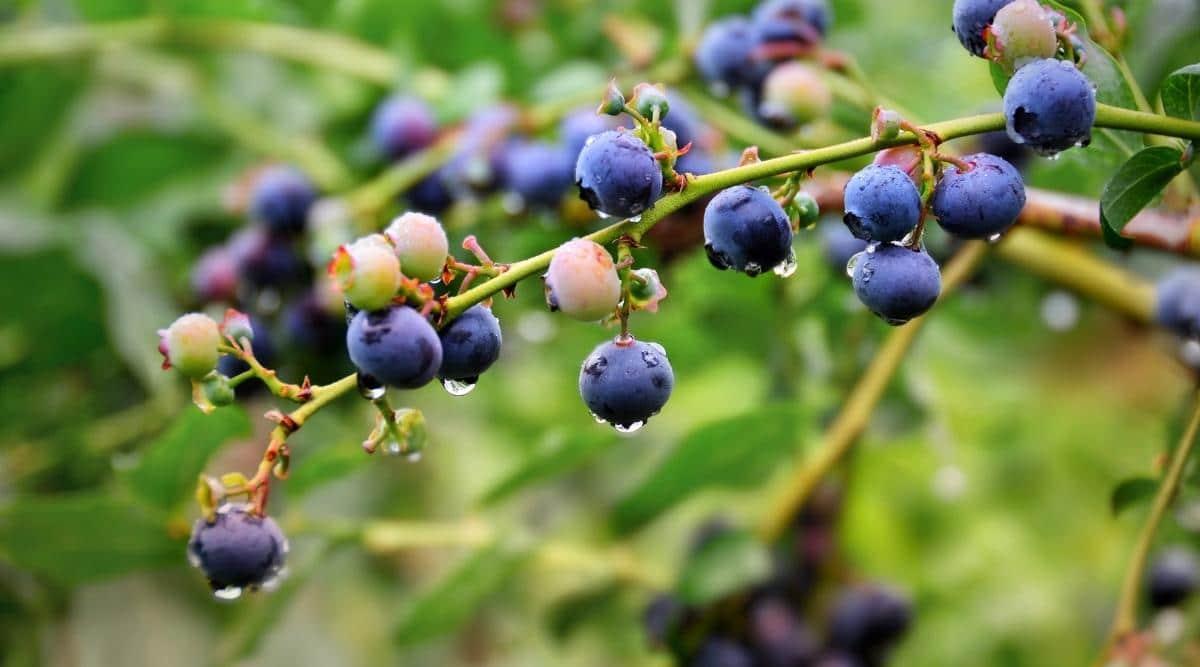Blueberries are a beloved fruit that many people enjoy growing in their gardens. However, even experienced gardeners can run into problems when caring for blueberry plants. If you notice your blueberry shrub looking unhealthy, don’t worry! With a little care and attention, you can help it make a full recovery and return to its former glory.
Understanding the Symptoms
First, let’s take a closer look at the symptoms your blueberry plant may be showing. By identifying these symptoms, we can determine the underlying causes and find appropriate solutions.
Improper Watering
Improper watering is a common culprit when it comes to blueberry plant health issues. Both under-watering and over-watering can cause problems. When a plant doesn’t receive enough water, it can’t absorb nutrients from the soil. Conversely, over-watering can lead to root rot, which is even more harmful.
To fix this, make sure you’re providing your blueberry plant with the right amount of water. Keep the soil moist, but not waterlogged. Proper drainage is essential.
Improper Soil Conditions
Soil conditions greatly affect the health of your blueberry plant. Well-drained soil is crucial, as excessive moisture can lead to root rot. Make sure to aerate your soil before planting and add compost or fertilizers to improve nutrient absorption.
Blueberry plants thrive in acidic soil with a pH level of 4.5 to 5.0. Anything above 5.0 can harm your plant and cause leaf discoloration and curling. Test your soil pH and adjust it accordingly using agricultural lime to raise pH or organic matter like pine needle mulch or coffee grounds to make it more acidic.
Improper Sunlight Exposure
Proper sunlight exposure is vital for blueberry plants to prevent leaf discoloration and ensure optimal bloom and berry production. Blueberries love full sun and require at least 6 hours of sunlight daily. However, too much shade can make them less productive.
Ensure your blueberry plant receives adequate sunlight to perform photosynthesis and produce food. Too little sunlight will cause yellowing and browning of leaves, while excess sunlight can lead to sun scorching. Find a balance and provide shade in extremely hot conditions.
Nutrient Deficiencies
Nutrient deficiencies are a primary cause of red leaves in blueberry plants. Maintaining the right soil pH is crucial for nutrient absorption. Test your soil to identify any deficiencies and adjust accordingly.
Phosphorus deficiency causes maroon red leaves in spring. Make the soil more acidic using organic matter to improve nutrient absorption. For magnesium deficiency, add epsom salt to the soil, which contains magnesium and sulfur. General nutrient deficiencies can be resolved by adjusting soil pH, providing adequate sunlight and water, and using plant food containing the lacking nutrients.
Diseases
Certain diseases, such as Phomopsis Twig Blight, Powdery Mildew, Blueberry Leaf Scorch, Blueberry Shoestring Virus, Septoria Leaf Spot, Mummy Berry Disease, Blueberry Leaf Rust, and Stem Blight, can cause leaf discoloration and even plant death if left untreated. Understanding how to control these diseases is crucial for your plant’s health.
Each disease requires specific treatments, such as pruning infected parts, applying fungicides, or completely removing infected plants. Prevention measures, including good spacing between plants, proper plant care, and using resistant cultivars, can help reduce the risk of disease.
Harsh Temperatures
Extreme cold or heat can harm blueberry plants. Temperatures below 23 degrees Fahrenheit can kill developing flower buds, while high temperatures can scorch flowers and other plant parts. Protect your plants with covers during cold nights and provide shade and sufficient watering during hot weather.
Natural Process
Sometimes, branches on blueberry plants naturally die and fall off. If the rest of the plant appears healthy, this is nothing to worry about. Prune the dead branches to promote new growth and maintain the plant’s overall health.
Pest Infestations
Pests, including birds and insects, can damage and potentially destroy blueberry plants. Protect your plants from birds by using netting, reflective materials, or scare tactics. For insects, use sticky traps and apply insecticides or insecticidal soap as necessary.
Root Damage
Root damage can occur due to overcrowding, rough handling, or poor drainage, leading to stunted growth or rot. Repot plants to allow root expansion or prune excess roots. Check for healthy roots, which should be pale and whitish-yellow, and discard plants with diseased roots.
Acclimation
When newly transplanted, blueberry plants may undergo stress as they adjust to their new environment. Give them extra care and time to acclimate. Consistent care will help them bounce back and regain their health.
Change in Seasons
During the dormant period, blueberry plants shed their foliage as a natural process to prepare for the coming year. Provide winter protection and ensure proper care to ensure a healthy return when spring arrives.
Blueberry Plant Care Tips
Now that you understand the various causes of blueberry plant health problems, let’s look at some general care tips to keep your plants thriving:
- Maintain proper watering practices, ensuring the soil is moist but well-drained.
- Test and adjust soil pH to ensure acidity levels between 4.5 and 5.0.
- Provide at least 6 hours of sunlight daily, balancing between full sun and shade in hot climates.
- Address nutrient deficiencies by testing soil and using appropriate fertilizers or soil amendments.
- Control diseases through pruning, fungicides, and preventive measures like good spacing and proper plant care.
- Protect plants from harsh temperatures with covers, mulching, and shading.
- Address root damage by repotting, pruning, or discarding affected plants.
- Allow newly transplanted plants time to acclimate and provide extra care during this phase.
- Protect plants from pests, such as birds and insects, using netting, reflective materials, traps, and appropriate treatments.
Final Thoughts
We hope this article has provided you with valuable insights on how to save your blueberry plants from declining health. While there can be various causes for their poor condition, most issues have solutions that can revive your plants. Prompt action is essential, so don’t hesitate to implement the necessary measures.
Remember, prevention is key. By meeting your plant’s needs, you can ensure their long-term vitality and enjoy bountiful blueberry harvests for years to come. If you have any further questions or need more advice, feel free to ask us in the comments section below. Happy gardening!


